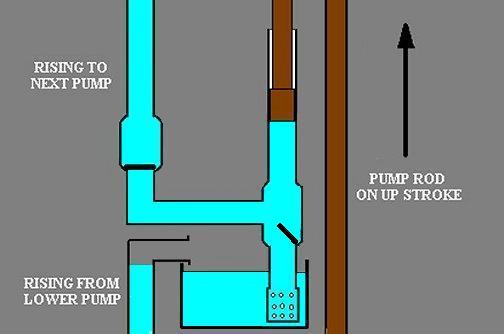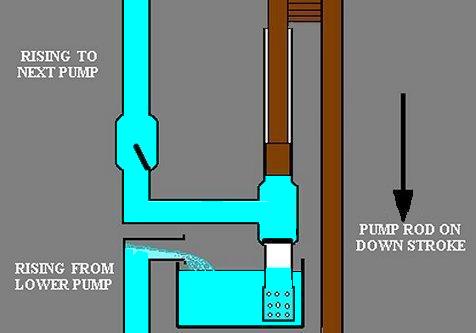|
As
the pump rod is raised, a vacuum starts to form below the plunger
allowing atmospheric pressure acting on the cistern to force water from
the cistern up through the clack valve and into the pump. On the down
stroke of the rod, the weight of water in the pump instantly forces the
clack valve shut preventing the water from falling back into the cistern
and with only one route left the water is forced through the second
valve and up the rising main. As the pump rod commences the upstroke,
the weight of water, this time in the rising main falls onto the
second valve forcing it closed thus retaining the pumped water in the
rising main whilst at the same time, water is again drawn into the pump
from the cistern. As all the pumps were
worked simultaneously, the discharged water from the lower pump kept the
cistern full.
BACK
Home
page
|



